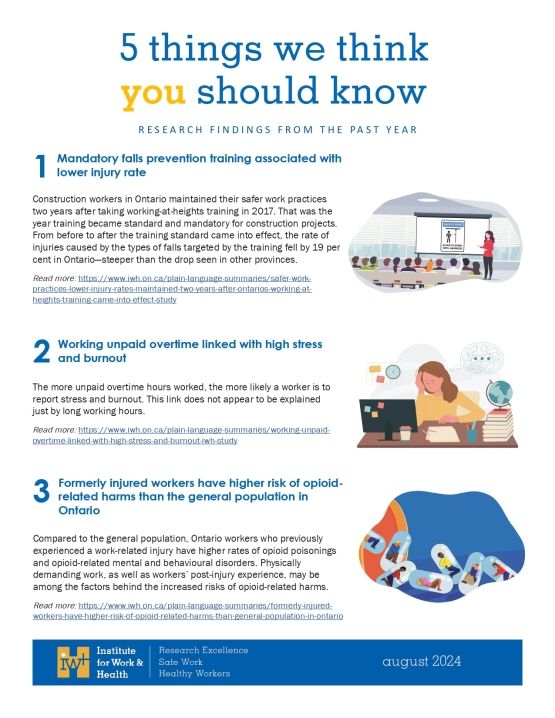
Mandatory falls prevention training associated with lower injury rate
Construction workers in Ontario maintained their safer work practices two years after taking working-at-heights training in 2017. That was the year training became standard and mandatory for construction projects. From before to after the training standard came into effect, the rate of injuries caused by the types of falls targeted by the training fell by 19 per cent in Ontario—steeper than the drop seen in other provinces.

Working unpaid overtime linked with high stress and burnout
The more unpaid overtime hours worked, the more likely a worker is to report stress and burnout. This link does not appear to be explained just by long working hours.

Formerly injured workers have higher risk of opioid-related harms than the general population in Ontario
Compared to the general population, Ontario workers who previously experienced a work-related injury have higher rates of opioid poisonings and opioid-related mental and behavioural disorders. Physically demanding work, as well as workers’ post-injury experience, may be among the factors behind the increased risks of opioid-related harms.

Police service members face challenges when returning to work after an injury
Returning to work after an injury can be challenging in any sector. But the police sector, which is already prone to unique and complex work-related injuries, has its own set of return-to-work challenges. Within the context and culture of policing, challenges relate to accommodation, communication and trust.

Work-related COVID-19 trends in Ontario differed from infection patterns in the population
Looking back over five waves of the COVID-19 pandemic in Ontario, researchers found work-related infection rates did not follow infection patterns in the general population. This study highlights the need for real-time collection of information about work as part of public health tracking of infection spread.
